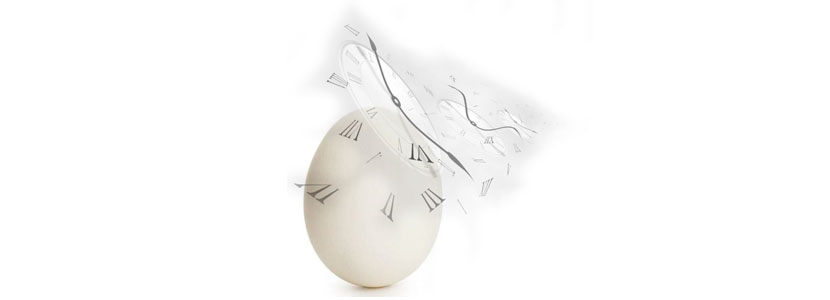The Splitfeeding method provides an optimal supply of nutrients. By supplying two different diets a day, it satisfies the hen’s nutrient requirements during the egg formation process.
Since 2005, a new layer feeding program, called Splitfeeding, has been developed to satisfy the specific nutrient needs that occur in each phase of egg formation, needs that vary throughout the day.
Laying hens lay most of the eggs during the morning (Etches, 1986; Larbier and Leclercq, 1992). The interval between two successive ovipositions is about 24-26 hours (Keshavarz, 1998). After oviposition, the next ovulation occurs 30 minutes later. The white is formed in the first four hours of the egg formation process, then the egg moves to the uterus where the shell is deposited around the albumin, the duration of this process is approximately 20 hours (Larbier and Leclercq, 1992). The needs of laying hens for amino acids, energy, calcium and phosphorus do not remain constant but vary throughout the day. Attending to the different needs in nutrients that the hen has for the formation of the different components of the egg. Feeding systems in single-diet layers with constant levels of nutrients may not result in optimal nutrient utilization (Chah, 1972; Leeson and Summers, 1997). Shell formation takes place mainly during the late afternoon and evening hours. Result of the use of Splitfeeding is the most profitable production of eggs due to a better quality of the shell, a greater number of eggs suitable for sale, lower production cost and improvement of the productive yields. The nutritional needs of the layers vary during the day depending on the evolution of the egg formation
Experimental design tests
The research work carried out by the team of researchers at the Trouw Nutrition Poultry Research center, aimed to accurately determine the nutritional needs of different elements during the morning and afternoon when two diets are provided:
- Energy
- Amino acids
- Calcium
- Match
- Morning diet: meets the needs in the early stages of egg formation.
- Afternoon diet: satisfies the needs of shell formation.
Each test was performed with a single nutrient, determining the optimal level of energy, amino acids, calcium and phosphorus for morning and afternoon diets throughout the laying cycle. Compared to the traditional single-diet system, Splitfeeding results in a reduction in total nutrient intake (Figure 2), with productive performance being at least as good as when using a single diet.
In the three experiments in which the effects of nutrient excretion were studied, the results demonstrated that Splitfeeding is a more sustainable feeding program by reducing the excretion of nitrogen, phosphorus and calcium in feces (Figure 5). Splitfeeding resulted in lower daily nutrient intake and better use of those nutrients, as these were supplied when the layers needed them.
- Morning diet, designed to meet the needs when the album is forming and oviposition occurs.
- Afternoon diet, designed to meet the needs associated with peel formation.
This adaptation to the physiological needs of the laying hen during the day allows the Splitfeeding feeding system to be a more effective feeding program: Splitfeeding provides the optimal supply of nutrients that the hens require during the egg formation process, achieving a production more profitable and sustainable egg. Benefits provided by Splitfeeding:
- Improving the quality of the shell and increasing the number of eggs suitable for sale.
- More profitable egg production through lower production cost.
- Improvement of nutrient efficiency and sustainability.

